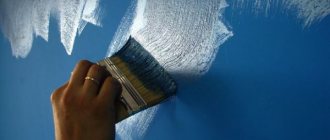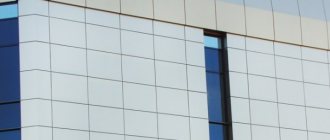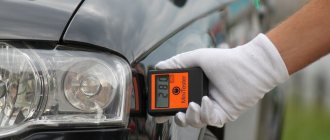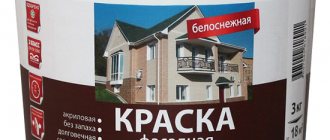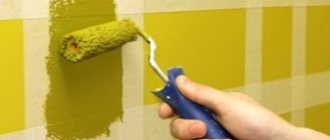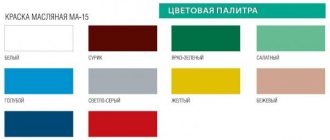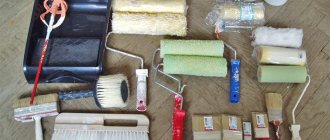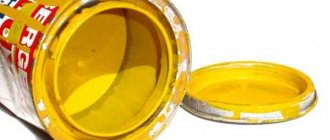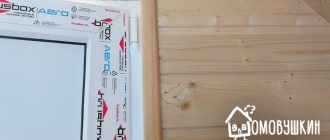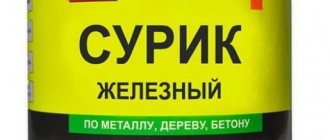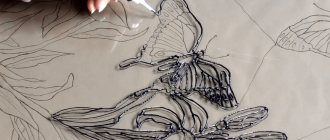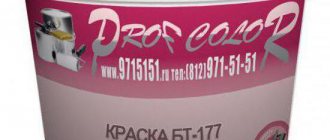Epoxy-polyester paints are a mixture of two other types of powder paints: epoxy and polyester. This combination is used in cases where the powder coating does not have high requirements in terms of solvent exposure or corrosion resistance. Epoxy-polyester paints have a wide range of applications, are distinguished by a number of technological advantages and a relatively low price.
This paint contains polyester and epoxy resins. Epoxy-polyester paint is designed largely to provide chemical and physical resistance. The main properties of the paint are its light fastness and heat resistance, however, despite these qualities, the resistance to external polyester dyes is quite low.
Epoxy-polyester paints: areas of application
Epoxy-polyester powder paint is used in a wide variety of industries and industries. Thanks to its effectiveness and ease of use, it is relevant:
- for air and oil filters;
- household and construction tools, equipment;
- electrical equipment and electric motors;
- fire extinguishers;
- household electrical appliances and equipment;
- boilers and other types of water heating equipment;
- heating boilers;
- shower cabins;
- furniture for various purposes: medical, country, office;
- transformer housings and electrical panels;
- vehicle parts;
- and even metal wire.
As you can see, epoxy-polyester paint is essentially universal and is used by manufacturers of various equipment, machinery, tools, inventory, etc.
Aluminum surface preparation
In order to correctly establish the technical requirements for powder coating on aluminum profiles, it is useful to briefly follow the technological process of applying powder coating. Very often, problems with powder coating are associated not with the quality of the powder itself, but with insufficient quality of surface preparation.
The surface of aluminum profiles that come directly from the press production for powder coating are often contaminated with lubricants and other contaminants, such as ordinary workshop dust. Aluminum profiles that have been stored in wholesale warehouses for a long time may have white or matte traces of general corrosion on the surface.
It is therefore very important that the aluminum surface is thoroughly prepared with strict quality control before powder coating is applied.
It is known that most defects in the powder coating of aluminum profiles are associated precisely with violations in the preparation of their surface for painting. Aluminum surface preparation has two main goals:
- Ensure that the surface is completely cleaned of foreign contaminants, especially grease and grease.
- Give the surface high adhesive properties for a strong connection with the powder coating.
Chemical preparation of the profile surface is carried out on a horizontal line of immersion baths or on a vertical line using spray devices. The minimum sequence of chemical preparation includes the following operations:
- Degreasing
- Flushing
- Etching
- Flushing
- Brightening (only with alkaline etching)
- Flushing
- Formation of chromate or chromate-free conversion coating
- Flushing
- Rinsing in demineralized water
- Drying
Find out more about aluminum surface preparation technology here.
During this entire technological process, reliable control must be carried out to ensure that the composition of the working chemical solutions and the degree of contamination of the wash water corresponds to the specified limits.
Epoxy-polyester paint: advantages and nuances
As noted above, the two components of epoxy-polyester paint, when combined, form a hard film on the surface of the product. This type of paint coating is the most preferred among other types of powder paints. This is due to its advantages:
- the paint can withstand the maximum temperatures that occur in the oven;
- extremely relevant for painting surfaces that come into maximum contact with heat and light - for ceilings, walls, heating radiators; this use is explained by the fact that epoxy-polyester paint turns yellow less when exposed to external factors;
- absolutely safe for people (non-toxic), this factor is due to the fact that the paint is inert after hardening;
- the coating on which such paint is applied is practically not subject to abrasion, this is due to the fact that this type of paint coating is resistant to moisture and chemicals; therefore, if the paint was applied in compliance with all technologies, then after hardening it is in such strong contact with the surface that the product can be used almost forever.
With all the advantages, epoxy-polyester paint also has its own specifics, which are expressed in the following:
- despite the fact that the cost of such paint itself is not very high, the equipment for its use, as well as the labor costs of a qualified specialist, are quite expensive, precisely for this reason the final cost of painting may not be so small;
- in addition to the expensive equipment necessary to work with epoxy-polyester paint, a highly qualified specialist is an extremely important link; Without his skills, it is simply technically impossible to apply paint correctly, even if you try - this should only be done by an experienced master.
Variety of powder paints
Thermoplastic paints were first used, but in the last few decades thermoset paints have been used instead. This has made the scope of application of powder paints significantly wider due to the fact that they began to have much more unique properties, which consist, first of all, in resistance to mechanical damage and durability.
Powder paints are divided into:
- Thermosetting powder paints (also called thermosets);
- Thermoplastic powder paints.
The thermosetting group of powder paints is distinguished by the fact that when it is heated, a chemical reaction occurs, as a result of which a durable solid film is formed on the surface being painted. And paints belonging to the thermoplastic group, when exposed to high temperatures, melt, and after cooling they acquire a solid structure. The latter have greater plasticity.
Powder paints of the first group, depending on what film-forming substances are included in their composition, are divided into:
- Epoxy powder paints;
- Epoxy-polyester powder paints;
- Polyester powder paints;
- Acrylate;
- Polyurethane.
Thus, the main film formers in powder paint can be: epoxy, a mixture of epoxy and polyester, polyester, and acrylate. All paints in this group can be used when painting mechanical engineering parts, since they have significantly greater hardness, impact resistance, and decorative properties.
Of all the paints in this group, epoxy powder paints were the first to appear, the popularity of which is high even today. Their wide popularity is associated with the main properties, which are high strength, adhesion, and good resistance to solvents. However, epoxy powder paints also have their disadvantages. These include:
- Intolerance to exposure to high temperatures. For example, if they are heated strongly, the coating acquires a yellowish tint.
- Sunlight intolerance. When epoxy powder coating is exposed to ultraviolet light, its top layer is susceptible to destruction, causing the coating to become chalky. However, this does not affect anything other than the aesthetic appearance, since the strength of the coating remains unchanged. Therefore, these paints are more suitable for painting interiors.
It is worth saying that absolutely any paint and varnish equipment is suitable for using this type of paint. In order for the applied powder coating to acquire a solid structure, it will take only 15 minutes and a temperature of 1700 C for conventional paints and 1400 C for fast-curing paints.
For clarity, you can watch a video about applying powder coating
Epoxy-polyester paint in Moscow.
You can buy epoxy-polyester paint from Micropool Company LLC. Our company is the official representative of the manufacturing plant, which is why we offer not only high-quality and real epoxy-polyester paint in Moscow, but also competitive prices. You can get additional information about cooperation, as well as consult on the operation, properties and technical parameters of our products by calling the numbers in Moscow, +7 (929) 512-44-40.
Powder coating
Powder coating is a method of spraying dry paint in the form of fine powder particles that are electrically charged. Charged powder particles are attracted to the grounded product to form a uniform thin layer. Then this product with a layer of powder passes through an oven for 10-15 minutes at a temperature of about 200 ºС. After leaving the oven and cooling to room temperature, the powder coating is completely ready to perform its functions, protective and decorative.
Chemical properties of epoxy polyester paint at room temperature.
| Excellent stability | + |
| Limited stability | <> |
| Minimal or none | — |
| Sea water | + |
| Tap water | + |
| Distilled water | + |
| Sodium chloride 2% | + |
| Sodium chloride 20% | + |
| Sulfuric acid solution 20% | + |
| Perchloric acid solution 10% | + |
| Perchloric acid solution, concentrated | — |
| Nitric acid solution 3% | <> |
| Nitric acid solution 10% | <> |
| Nitric acid solution 30% | <> |
| Phosphoric acid solution 4% | + |
| Phosphoric acid solution 10% | + |
| Phosphoric acid solution 43% | + |
| Sodium hydroxide 5% | <> |
| Sodium hydroxide 30% | — |
| Acetic acid solution 10% | + |
| Concentrated acetic acid solution | — |
| Sodium hypochloride diluted | — |
| Lactic acid 10% | + |
| Citric acid 10% | <> |
| Ammonia (ammonia) 10% | — |
| Ammonia (ammonia) concentrated | — |
| Sodium carbonate | + |
| Oil, kerosene | + |
| Raw oil | + |
| Edible oils | + |
| Refined petroleum (gasoline) | + |
| Turpentine | + |
| High octane gasoline | <> |
| Tolowen | <> |
| Xylene | <> |
| Ethyl alcohol 96% | + |
| Butanol | + |
| Isopropyl alcohol | + |
| Glycerol | + |
| Cyclohexanone | — |
| Acetone | — |
| Methyl ethyl ketone | — |
| Ethyl acetate | <> |
| Trichlorethylene | — |
| Sodium dichromate | + |
| Hydrogen peroxide 3% | <> |
| Phenol | — |
| Carbamide (urea) |
Powder coating
Aluminum profiles, dried after chemical preparation, are placed on conveyor hangers and fed into the powder spraying chamber. Special spraying devices - guns - supply sprayed powder onto aluminum profiles, which forms a thin layer of controlled thickness on their surface. All “excess” powder is collected by the return system and then reused. This makes it possible to achieve powder use efficiency of up to 95%.
Then the profiles with sprayed powder pass through a polymerization oven at a temperature of about 200 °C. The powder coating undergoes four stages until it is completely ready [1]:
- melting;
- spreading;
- transition to a jelly-like state;
- curing (polymerization).
After leaving the oven and cooling the profiles to room temperature, the powder coating is completely ready for its intended use.
Compound
Polyester coatings are made by mixing the components and their further homogenization in a special twin-screw extruder under high temperatures. Next, the alloy is cooled, then it is crushed and sifted. Thanks to this, the mixture becomes homogeneous. Such structures contain a film-forming resin, a hardener, various pigments and additives.
The role of fillers and pigments is to improve the properties of the composition and the surface to be coated. For example, by adding them in different proportions, you can adjust the properties of the composition in terms of electrification, resistance to temperature fluctuations, electrical conductivity, strength, etc.
Note : If metal powder is used as a filler, you can create a simulated metal surface.
Without the use of substances such as pigment or fillers, the surface to be coated will be transparent.
The plasticizers included in the composition reflect the physical and mechanical characteristics of the material. The temperature and time of film formation depend on them. They should in no case violate the aggregative properties of polymers, affect the deterioration of technological characteristics, or interfere with the process of film formation.
By using modifying substances, the properties of the material are also improved. However, physical modification is widespread due to various film-forming additives. Using modifiers, it is possible to change the characteristics from the technological side, namely the viscosity properties of the alloy, flowability indicators, etc.
Adsorbents are needed for thermoactive film-forming coatings. To speed up the process, appropriate accelerators are used. They are activated when high temperatures are reached, when the hardening process begins after the film former melts and a liquid film is formed.
The curing system is the most significant component of a thermoset paint. In addition to stability and curing conditions, the performance qualities of the coating also depend on it.
Additives are used to increase the weather resistance of the material. They reduce the photodestruction of polymers under the influence of ultraviolet rays. This also includes resistance to temperature fluctuations, free-flowing qualities of the composition, etc.
Interior epoxy powder coating. Application and selection of material. Scotchkote coverings
Protection of the linear part, fittings, valve units, bends and other equipment from corrosion and internal contamination is a necessary condition for the long-term, environmentally friendly and economical operation of the pipeline system.
The corrosion protection system affects not only the service life, but also the cost of operation, maintenance, pumping costs, pipeline capacity, increased operating temperature, the presence of salts, hydrogen sulfide and carbon dioxide in the transported product, as well as other factors - all of them contribute internal corrosion. Various methods are available to combat internal corrosion, including the use of special alloys, inhibitors and coatings.
An internal epoxy anti-corrosion coating provides the pipeline with a number of benefits in addition to corrosion protection:
— improved flow characteristics and reduced energy consumption for pumping,
— simplified inspection of pipes during construction,
— protection against corrosion during pipe storage,
— easier pipeline cleaning and reduced sedimentation.
Internal epoxy coatings have been used to protect oil and gas pipelines and equipment against corrosion for several decades. These coatings have fairly high flexibility, resistance to gases, high chemical resistance and abrasion resistance. The operating temperature of the coating depends on its composition, but the maximum operating temperature of epoxy coatings does not exceed +140C. The coating thickness is usually 450-500 microns or slightly more if used in particularly aggressive environments.
Both liquid and powder materials are used to apply interior epoxy coatings. The technology for applying liquid materials is somewhat simpler; it does not require additional polymerization of the coating at a temperature of about 190-210C after its spraying. As a rule, the applied liquid coating polymerizes at temperatures around 60-70C in a few hours or at lower temperatures, but for a longer time. Powder coatings have a number of important advantages over liquid ones: as a rule, the technology for applying internal powder coatings is more productive, there is a wider range of coatings for different environments, including coatings resistant to highly aggressive environments, and the technology for applying powders is more environmentally friendly. Typically, the final cost of interior powder coating is lower than the cost of liquid coatings. Often the choice of liquid or powder coating is limited by the equipment that the enterprise already has, but if we are talking about a new production, then you should think very carefully about what type of coating to focus on and what equipment to purchase.
Today, 3M produces both liquid and powder epoxy materials for corrosion protection of the internal surfaces of pipes and equipment. In this article we would like to give you a very brief introduction to some of the epoxy powder materials for this application.
The properties of epoxy powder coating are determined by its composition. Any of the components, namely the epoxy polymer, hardener, curing catalyst, fillers and pigments, as well as special functional additives, affect the properties of the epoxy powder coating, its processability during application and storage stability. Despite the apparent similarity of “epoxy” materials, materials from different manufacturers differ greatly in their properties. Another important parameter is the stability of the quality and characteristics of the produced material.
Which coating should you choose?
When choosing an epoxy powder coating, provided that the material is sufficiently manufacturable on existing equipment, the main criterion is its resistance to the existing operating conditions of the pipeline. The main factors of an aggressive environment include: - operating temperature,
- pressure,
- chemical composition.
Elevated operating temperatures contribute to accelerated degradation of the coating. Most coatings are permeable to hydrogen sulfide and carbon dioxide, which can cause the coating to peel off when the pressure is reduced.
A balanced choice of material involves taking into account all these factors and systematically selecting the optimal coating. Any coating is a compromise, they all have their advantages and limitations. Since the main compromise is usually sought between flexibility, chemical resistance and reactivity, the optimal coating system is the most flexible coating system, which can be economically and efficiently applied in a given production and ensures adequate functioning in the specific internal conditions of the pipeline.
Of course, the most reliable data are from practical field operation of the coating. However, this data is not always available for decision-making; obtaining it requires significant time and resources, and the conditions are very diverse. The simplest, accelerated way to test the chemical resistance of a coating is the autoclave test. For example, table No. 1 shows data from an autoclave test of coatings in carbon dioxide. Under conditions of varying CO2 content, coating No. 3 showed the best result.
Table No. 1
| % CO2 | Temperature, Hail. WITH | Coverage type | |||
| 1 | 2 | 3 | 4 | ||
| 3 | 200 | + | + | + | + |
| 26 | 200 | + | + | + | — |
| 50 | 190 | + | — | + | — |
| 100 | 160 | + | + | + | — |
Table No. 2 illustrates possible compromises when choosing a coating, as well as the issue of the need for a primer layer in the system, depending on operating conditions. Coating A was developed for relatively mild operating conditions where fairly high flexibility is required. Coating B has average flexibility, but allows pipes to be bent in field conditions, and also provides increased resistance to aggressive media and gases. This coating can be used without primer, but in relatively soft environments. Operation of B in more severe environments will require the presence of primer in the coating system B. More precisely, the need or absence of primer can be confirmed on the basis of atoclave tests or data from long-term field tests.
Table No. 2.
| Coating Type | Working environment | Flexibility dia. at minus 30C | Is soil needed in the system? | Is additional polymerization necessary? |
| A | without CO2 | 5.7 | Yes | No |
| IN | with CO2 | 1.2 | Yes or no | Yes |
| WITH | With CO2 | 0.4 | No | No |
Coating C was developed specifically to protect the internal weld joint using a commercially available internal robot. In this case, applying primer is very undesirable, because is an additional and more complicated stage, leading to a significant increase in the cost of equipment. Due to its composition, Coating C does not require priming in any environment; it is not flexible, but this is not required for its intended purpose. The same coating without primer can be used to protect products against corrosion, the use of which does not involve bending during installation and operation. Namely - bent elbows, valve units, pumps, etc.
Various soils.
Phenolic-based soils have been used for many years and have proven themselves to be excellent. Their main 3 disadvantages - the required controlled drying and polymerization stage before spraying the top layer of powder, the emission of organic solvents and the fire hazard - have recently been eliminated with the advent of water-based chrome-free primers on the market. Water-based primers provide slightly lower coating durability compared to phenolic primers, but they are significantly more economical, environmentally friendly and technologically advanced. Their use can be combined with the choice of a more “durable” powder topcoat layer for the overall coating system.
The main objects of application of internal epoxy coatings:
— drinking and sea water pipelines,
— oil gathering pipelines transporting oil with a high content of water, salts, abrasive particles, pipelines for pumping water into wells,
— pipelines transporting raw gas containing moisture, hydrogen sulfide, carbon dioxide, abrasive particles,
- internal tank pipes,
— downhole pipes,
— fittings, bends, fittings, pumps, etc.
For example, the Saudi Aramco company has been successfully operating gas pipelines for more than 15 years, built from steel pipes with an internal coating of Scotchkote 6171, transporting gas with a hydrogen sulfide content of about 15-20%, with carbon dioxide and a high moisture content. This allowed Saudi Aramco to significantly reduce the consumption of expensive pipes made of special steels with high corrosion resistance and increase the service life of gas pipelines. With a high degree of probability, pipes with the same protective coating could be used in Russia, at the Astrakhan and Orenburg fields, which have a similar composition and aggressiveness of the produced gas.
Brief information about 3M materials used to protect the inner surface of pipes and equipment:
3M has been developing and producing epoxy powder materials for over 45 years. Among those coatings that are used to protect steel in aggressive environments and for the inner surface of pipes, the following can be distinguished:
Scotchkote 345 – phenolic primer,
Scotchkote 500N - water-based primer,
Scotchkote 206 Xtra LG is an epoxy powder coating for use in relatively soft hydrocarbon and aqueous environments, with a low content of hydrogen sulfide and carbon dioxide, has high flexibility, is usually applied with primer, operating temperature is 60-80C.
Scotchkote 134 is an epoxy powder coating designed for use in highly aggressive environments with a high content of hydrogen sulfide and carbon dioxide. It can be used both in systems with and without soil. Has average flexibility. It is used mainly in products that do not require field bending - tubing, pumps, fittings, bends, fittings, processing pipes for chemical plants. Operating temperature – up to +90C.
Scotchkote 6171 is a coating similar in protective properties to Scotchkote 134, but has significantly higher flexibility. Designed to protect against corrosion the internal surface of pipelines transporting crude oil and gas with a high content of water, hydrogen sulfide, carbon dioxide and having high corrosiveness. Pipes coated with Scotchkote 6171 can be bent in the field. Operating temperature up to +90C.
Scotchkote 6258 – epoxy powder coating for corrosion protection of the internal surface of pipes and tubing, operating temperature up to +130-140C.
Scotchkote 6159 is a coating for protecting internal weld joints, no primer required. Operating temperature up to +90C.
Some of our coatings have been tested at VNIIST, other coatings have not yet been tested there, because there was no real need for these materials in Russia. However, they all have operating experience outside of Russia, in various environments and applications. We invite to cooperation specialists in corrosion protection from Russian oil and gas companies, enterprises applying protective anti-corrosion coatings to pipes and other oil and gas equipment, manufacturers of valves and other equipment, industry and design institutes to solve pressing problems of corrosion protection of pipeline facilities and equipment in Russia .
Based on materials from https://neftegas.info/
